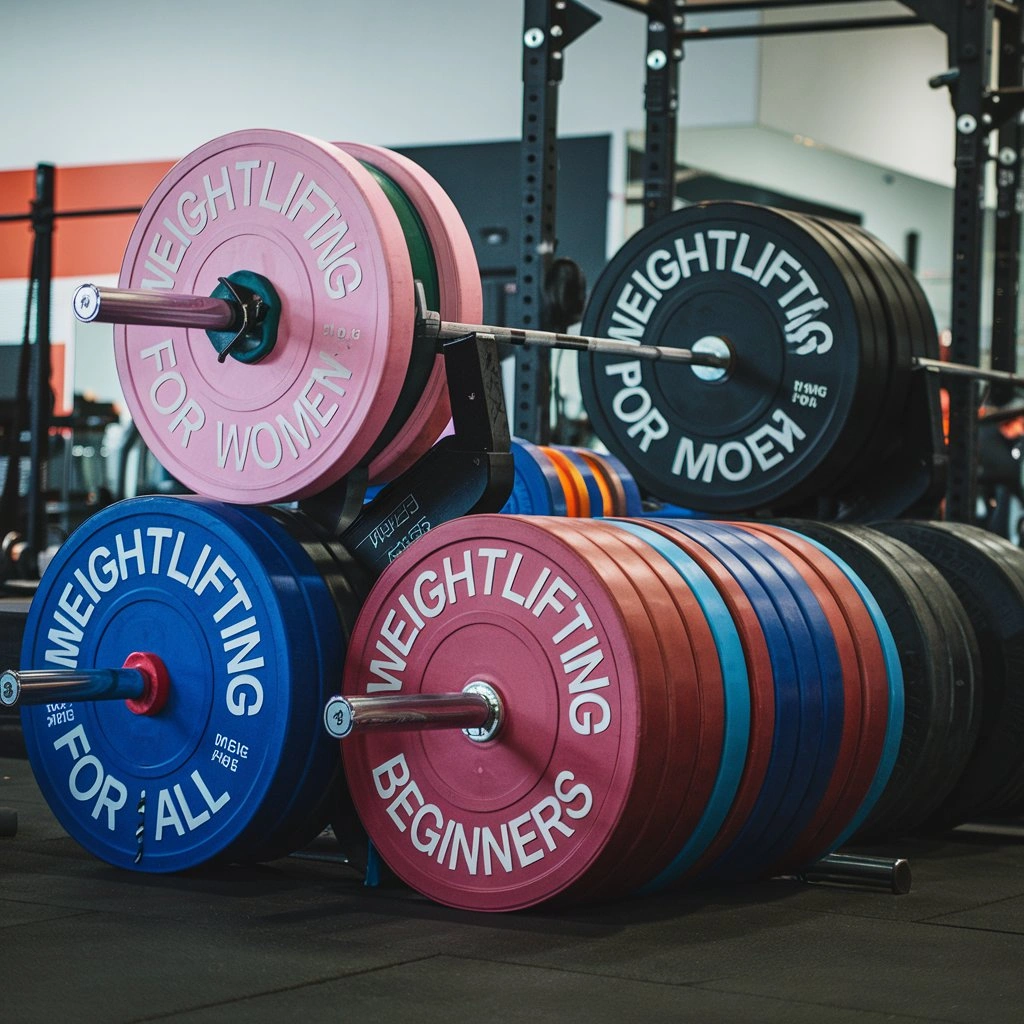Weightlifting is a lively and rewarding exercise. But, it has challenges. Protecting your body from pain and injury is especially hard. This is where barbell pads come in. They are invaluable accessories in weightlifting.
They are key for both seasoned lifters and beginners. They can elevate your training to new heights. Some overlook barbell pads. They are essential tools. They are made to improve comfort, stability, and safety in weightlifting.
The pads provide a cushioned barrier between the hard barbell and your body. They protect you from pain and potential injuries. This lets you focus on form and technique without distraction.
This guide covers Barbell Pads. We explore their benefits, types, proper usage, myths, maintenance tips, and more. You might be squatting, hip thrusting, or doing other compound exercises.
Adding barbell pads to your routine can make a huge difference in your lifting. Let’s dive in. We’ll discover how these simple accessories can revolutionize your workouts. They can help you reach your fitness goals safely and comfortably.
Benefits of Barbell Pads
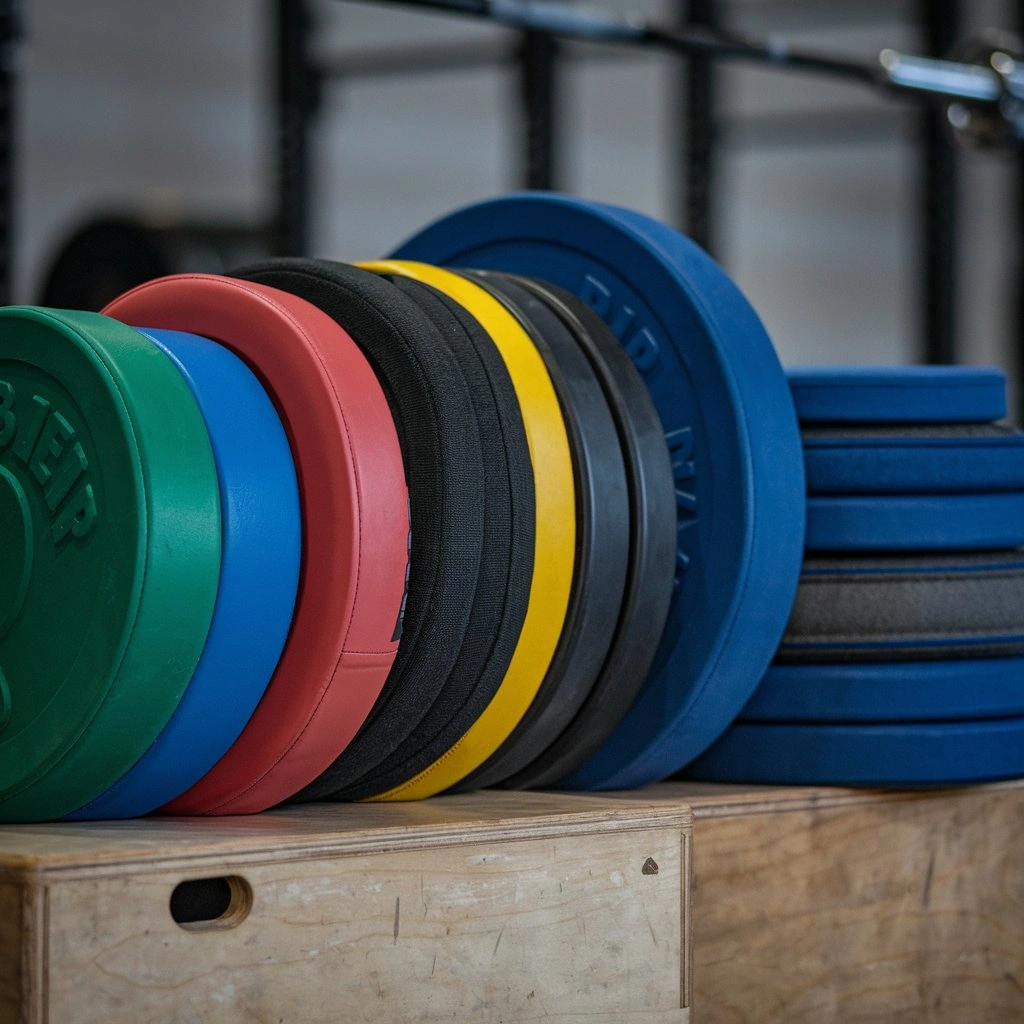
Protection from Discomfort and Pain
Cushioned support
Barbell pads offer a layer of padding between the hard metal of the barbell and your body. They reduce discomfort and pressure on your neck, shoulders, and hips. This happens during exercises like squats, lunges, and hip thrusts.
Enhanced comfort
Barbell pads distribute weight evenly across your body. This eases strain and soreness. Then, you can focus on doing exercises with proper form and technique.
Increased workout efficiency
Alleviating discomfort lets you exercise for longer and with more intensity. This maximizes your workouts and promotes Muscle Growth and strength gains.
Prevention of Injuries
Reduced risk of bruising and abrasions
Barbell pads create a barrier. It reduces the risk of bruising. It also cuts skin irritation from repeated contact with the barbell. This is especially true during heavy lifting.
Support for vulnerable areas
Barbell pads cushion sensitive areas, like the cervical spine, shoulders, and hips. They prevent acute injuries. They also stop chronic issues like muscle strains, tendonitis, and joint pain.
Enhanced safety during high-intensity lifts
During exercises, like back squats and hip thrusts, the barbell rests on your body. Barbell pads add safety. They cut the risk of slips and loss of control, and lessen the chance of serious injuries.
Enhanced Grip and Stability
Improved barbell control
Barbell pads boost grip stability. They do this by reducing slippage and movement of the barbell against your body. This lets you keep a secure hold and proper alignment throughout your lifts.
Better balance and proprioception
Barbell pads add cushioning and support. They let you achieve better stability and balance during exercises. They improve your awareness and cut the risk of instability accidents.
Confidence boost
Barbell pads give a stable and secure grip. They make you confident that you can lift safely and well. They let you push past your limits and set new personal bests.
Barbell pads have many benefits. They protect from pain and injury. They also improve grip and stability. Are you a novice or a seasoned gym goer? These versatile accessories can make a big difference in your training. They let you train harder, safer, and more comfortably.
Types of Barbell Pads
Foam Barbell Pads
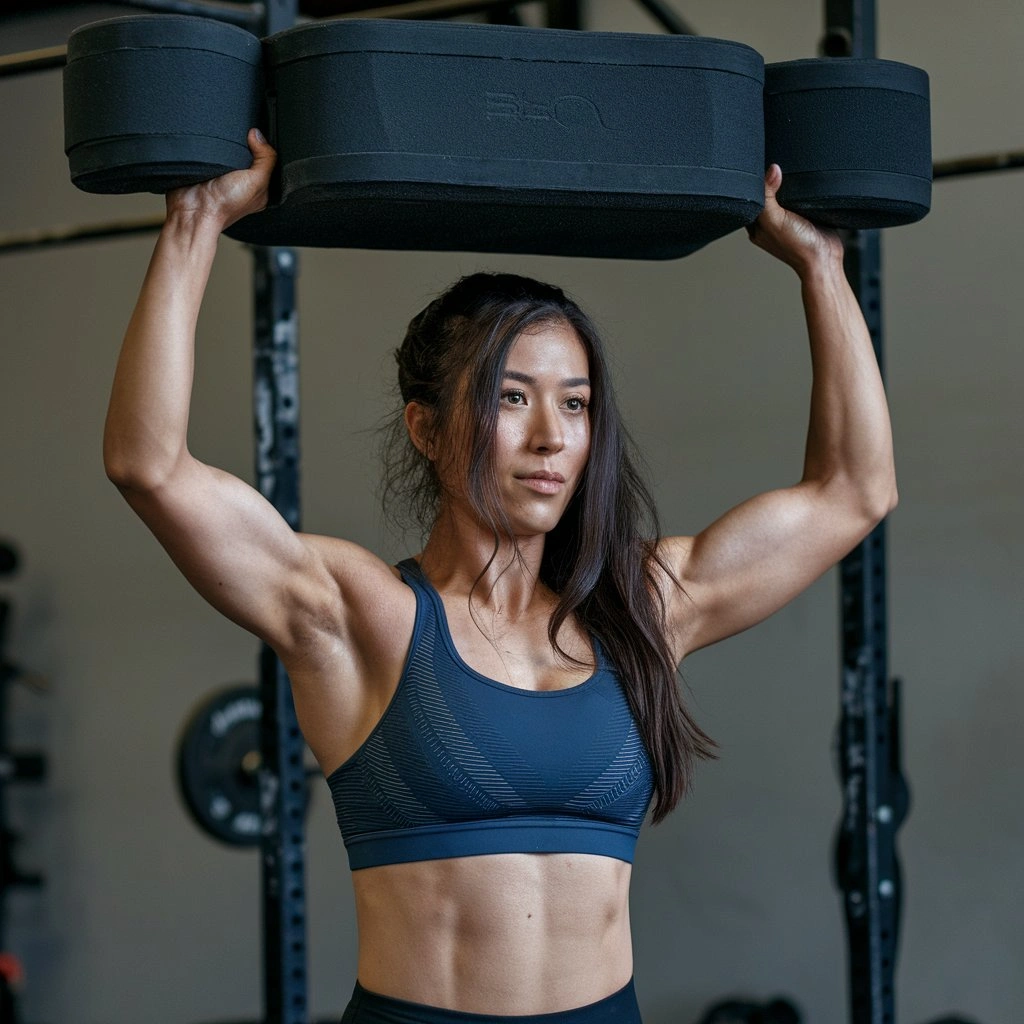
Description
Foam barbell pads are among the most common and widely used types of barbell pads. They are usually made from high-density foam. The foam is firm but cushioned. It provides comfort and support for weightlifting.
Features
- Durable and resilient: Foam barbell pads last a long time. They keep their shape and work well with heavy use.
- Versatile: The pads come in various lengths and thicknesses. They can fit different barbell sizes and user preferences.
- Lightweight and portable: Foam pads are light and easy to move. They are convenient for home gyms, commercial gyms, and outdoor workout spaces.
Gel Barbell Pads
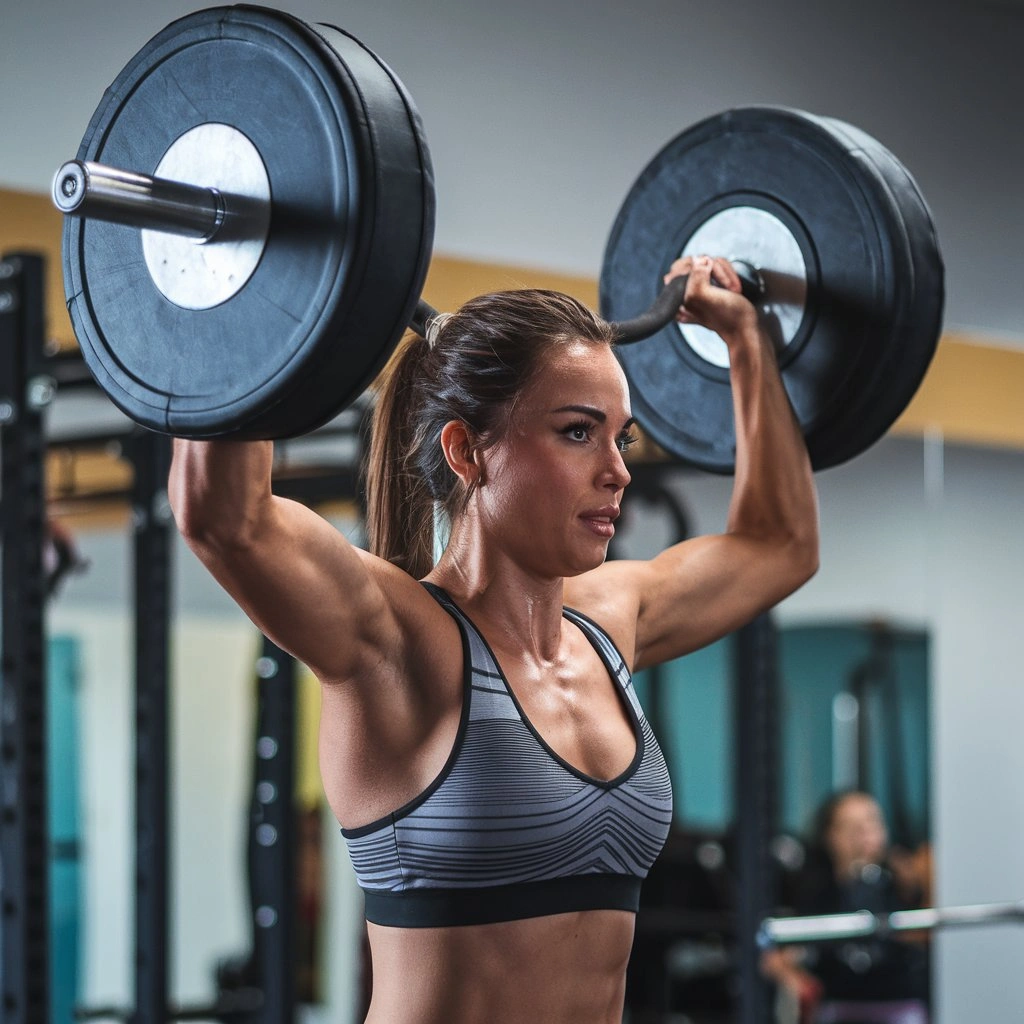
Description
Gel barbell pads have a gel-filled interior. It is encased in a tough outer covering. They offer a mix of cushioning and support for more comfort during weightlifting.
Features
- Superior comfort
Gel barbell pads are plush and gel-filled. They conform to your body’s contours. They provide maximum comfort and pressure relief. - Enhanced shock absorption
The gel filling absorbs impact. It spreads pressure evenly. This reduces the risk of discomfort, bruising, and injury during heavy lifts. - Non-slip design
Most gel barbell pads have textured surfaces or grip materials. These stop slipping and ensure a secure hold on the barbell, even during intense workouts.
CNeoprene Barbell Pads
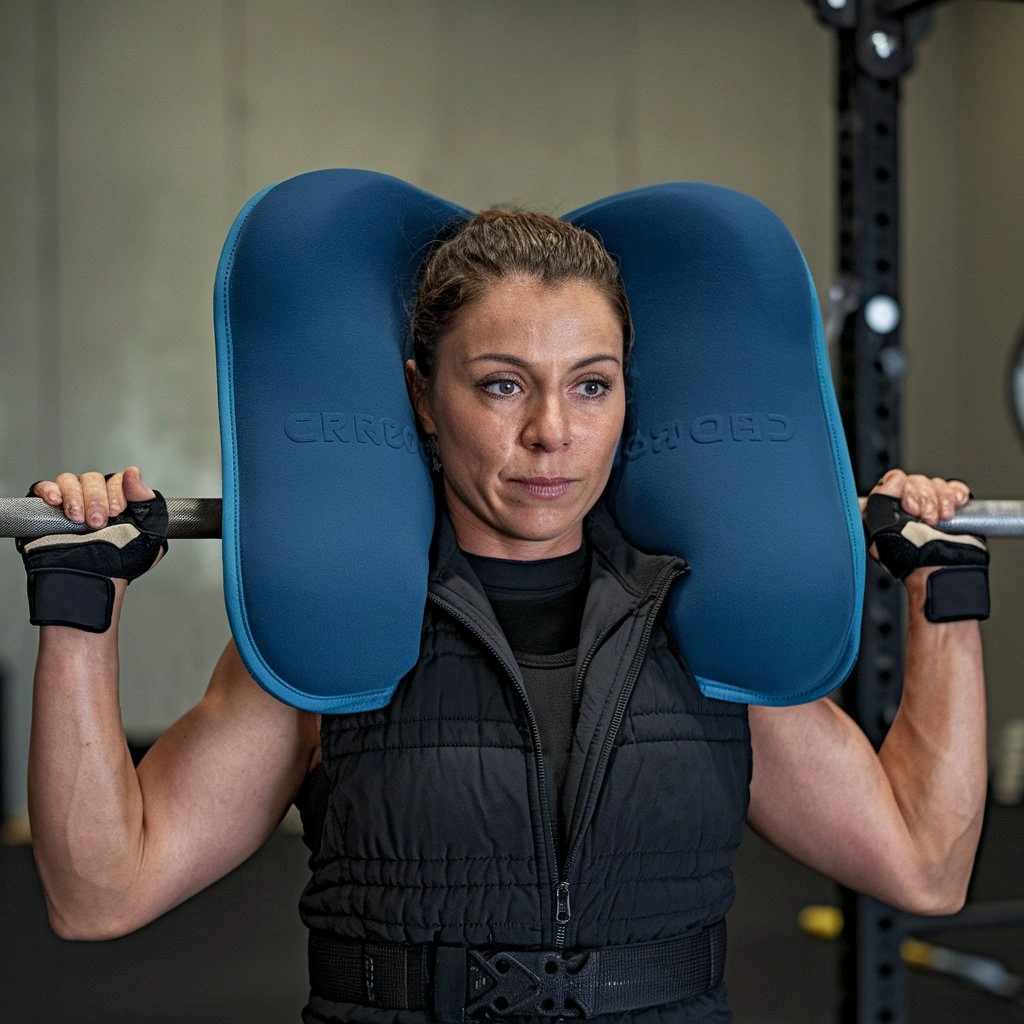
Description
Neoprene barbell pads are made from neoprene. It is a type of synthetic rubber. Neoprene is known for its stretch, strength, and resistance to moisture and abrasion.
Features
- Waterproof and sweat-resistant
Neoprene barbell pads are great for intense workouts. Sweat and moisture may be a concern. They resist water and sweat absorption. - Flexible and stretchable
Neoprene is snug around the barbell. It allows for easy on and off. It keeps the bar stable during exercises. - Easy to clean
You can wipe neoprene barbell pads with a damp cloth. Or, you can wash them with mild soap and water. This makes them easy to keep clean and hygienic for regular use.
Each type of barbell pad has unique advantages. These are in comfort, durability, and performance. They let users customize their lifting experience based on their preferences and goals.
You may prefer the firm support of foam, the soft comfort of gel, or the flexibility of neoprene. There’s a barbell pad for you.
Factors to Consider When Choosing Barbell Pads
Material Quality and Durability
Construction materials
Assess the quality of materials used to construct the barbell pad, such as foam, gel, or neoprene. Look for strong, high-quality materials. They can withstand regular use without wearing out.
Stitching and seams
Check the stitching and seams of the barbell pad. They should be reinforced and securely attached. This reduces the risk of tears or fraying over time.
Reviews and ratings
Research customer reviews and ratings. They show the overall quality and durability of the barbell pad from the point of view of other users.
Thickness and Density
Thickness
Consider the thickness of the barbell pad. Thicker pads have more cushioning and support. This is especially true during heavy lifting. However, excessively thick pads may affect your stability and balance.
Density
Evaluate the padding’s density. Denser foam or gel absorbs shock and spreads pressure. This cuts the risk of discomfort and injury. Look for a balance between thickness and density. This balance ensures good comfort and support.
Grip and Stability Features
Texture and surface grip
Look for barbell pads with textured or ribbed surfaces. These surfaces enhance grip and prevent slippage. They ensure a secure hold on the barbell even during sweaty or intense workouts.
Anti-slip properties
Consider features such as non-slip backing or grip-enhancing materials. These help keep the barbell pad in place during exercises. They reduce the need for readjustment and improve stability and safety.
Contouring and shape
Choose barbell pads with ergonomic designs. They should fit the shape of the barbell and your body. They provide a snug and secure fit that enhances stability and comfort during lifts.
Compatibility with Different Barbell Types
Barbell diameter
Make sure the barbell pad fits the diameter of your barbell. This is true whether it’s a standard Olympic barbell (2 inches) or a smaller specialty barbell.
Securing mechanism
Consider how the barbell pad attaches to the barbell. Does it use straps, Velcro, or other securing mechanisms? Choose a pad that fastens to the barbell. It must stay stable during exercises to prevent shifting or slipping.
By carefully considering these factors when choosing a barbell pad, you can select a high-quality, durable, and functional accessory that enhances your weightlifting experience and promotes safety, comfort, and performance.

How to Use Barbell Pads Properly
Proper Placement of the Barbell
Centering
Put the barbell pad in the middle of the barbell. It will touch your body during exercises.
Alignment
Make sure the barbell pad is even on the barbell. It should have no gaps or bumps. These could cause discomfort or instability.
Orientation
Turn the barbell pad so the thicker side faces outward. This gives maximum cushioning and support where it’s most needed.
Securing the Pad in Position
Straps or Velcro
If the barbell pad has straps or Velcro, fasten them around the barbell. This will stop the pad from sliding during exercises.
Tightness
Adjust the straps or Velcro to get a snug but comfy fit. This will keep the pad in place without hurting.
Double-check
Before your workout, check that the barbell pad is securely attached. It should be in the right place on the barbell. This will cut the risk of accidents or injuries.
Adjusting for Different Exercises and Body Types
Squats
For exercises like squats, the barbell rests on your upper back and shoulders. Put the barbell pad in the center of the barbell to cushion and support your traps and neck.
Hip Thrusts
During hip thrusts, put the barbell pad at the barbell’s center. It will rest against your hips. It will give padding and protection from discomfort and bruising.
Body Types
Adjust the placement and tilt of the barbell pad. Do this to fit your body type and the areas where you feel discomfort or pressure. Experiment with positioning. It will help you find the most comfortable and effective setup for your needs.
Common Misconceptions About Barbell Pads
Barbell Pads Decrease the Effectiveness of Exercises
Misconception
Some people think that using barbell pads reduces the effectiveness of exercises. They say the pads create a barrier between the body and the barbell. This, they claim, leads to less muscle engagement and strength gains.
Reality
Barbell pads provide cushioning and support to reduce discomfort. But, they do not greatly cut the effectiveness of exercises. Instead, they let lifters use the proper form. This reduces injury risk and lets them focus on targeting muscle groups.
Barbell Pads Are Only for Beginners
Misconception
Many think barbell pads are for beginners or new lifters. Experienced lifters may see them as unneeded or ineffective for advanced training.
Reality
Barbell pads can help all lifters. They are useful for beginners and pros. People of any skill level can feel pain during some exercises. Barbell pads provide a simple way to make workouts more comfortable. They also make them safer and more effective.
Barbell Pads Are Not Necessary for Certain Exercises
Misconception
Some people think that barbell pads are only needed for exercise. In these exercises, the barbell rests on the body, like squats or hip thrusts. They think pads are not needed for other moves, like deadlifts or bench presses.
Reality
Barbell pads are often used for exercises where the barbell touches the body. But, they can also help with exercises like hip thrusts or shoulder presses. In these exercises, the barbell may cause pain or bruising.
Also, people with sensitive neck or shoulder areas may use barbell pads. They can use them for exercises like front squats or overhead presses. This will reduce discomfort and help keep proper form.

Tips for Maintaining and Cleaning Barbell Pads
Regular Cleaning to Prevent Bacterial Buildup
Cleaning frequency
Clean your barbell pad often. Do this, especially after each workout. This removes sweat, oils, and bacteria that can build up on the surface.
Gentle cleaning
Use a mild soap and warm water to clean the barbell pad. Avoid harsh chemicals or abrasive cleaners. They could damage the material.
Thorough drying
After cleaning, let the barbell pad air dry fully. Then, store it to stop moisture buildup. This buildup can cause mold, mildew, and bad smells.
Storage in a Clean and Dry Environment
Proper storage
Store your barbell pad in a clean, dry place. Keep it away from moisture, humidity, and direct sunlight. This will keep it strong and make it last longer.
Hanging storage
Consider hanging the barbell pad on a hook or rack when not in use. This allows air to flow and prevents the padding from flattening.
Protective covering
Store the barbell pad in a gym bag or equipment storage area. Use a breathable fabric cover to shield it from dust, dirt, and other contaminants.
Inspection for Wear and Tear
Regular inspection
Check your barbell pad often. Look for signs of wear and tear, like fraying seams, cracks, or outer covering damage.
Replace as needed
If you notice any damage or wear, consider getting a new barbell pad. This will keep your workouts comfortable, safe, and effective.
Preventive maintenance
Take proactive measures to lengthen your barbell pad’s life. Avoid sharp objects and rough surfaces that could cause damage. Use proper lifting techniques to reduce stress on the pad.
Conclusion
Barbell pads are key accessories in weightlifting. They offer many benefits. These benefits enhance comfort, safety, and performance during workouts. Many people are wrong about this.
Knee sleeves are valuable tools for lifters of all experience levels. They provide cushioning and support. These help reduce discomfort, prevent injuries, and promote good form and technique.
Adding barbell pads to your weightlifting routine can change your training. They let you push your limits. They help you meet your fitness goals. They let you enjoy the journey with confidence and comfort.
Barbell pads protect against discomfort and pain. They also enhance grip and stability. They are crucial for improving your lifting and maximizing your gains. They play a key role.
To keep your barbell pads working well, you must maintain and clean them. Store them in a clean, dry place. Also, check them often for signs of wear and tear.
Take proactive steps to care for your barbell pads. This will protect their integrity and performance. It will let you keep reaping the benefits of these crucial accessories for years.
In conclusion, barbell pads are not just tools. They’re allies in your fitness journey. They support you every step of the way as you strive for greatness in the gym. So, embrace their comfort, protection, and stability. Let them empower you to lift confidently and train safely. Use them to achieve your fitness goals with ease.

